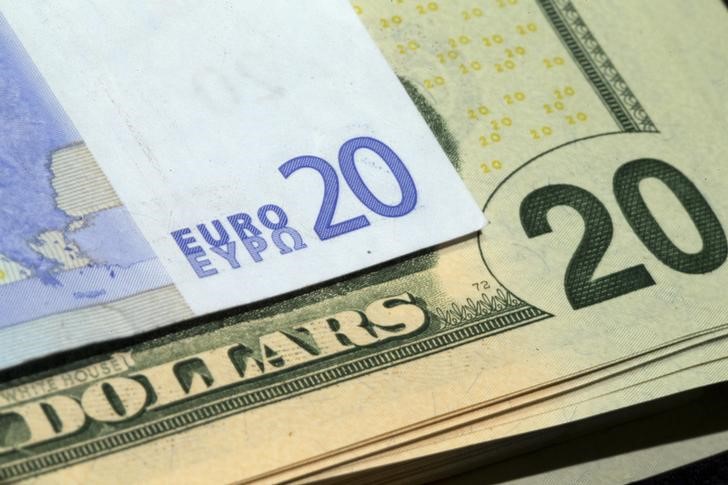Investing.com – The U.S. dollar steadied Monday, on course for a hefty monthly gain, while the euro was steady at the start of an action-packed week.
At 05:35 ET (09:35 GMT), the Dollar Index, which tracks the greenback against a basket of six other currencies, traded largely unchanged at 104.147, but was on track for a gain of around 4%, its sharpest monthly rise since April 2022.
Dollar in demand at start of key week
The dollar has been in demand of late on growing expectations of smaller U.S. interest rate cuts on the back of reasonably healthy economic data.
This sentiment is likely to be put to the test this week, with US gross domestic product data on Wednesday and, more importantly, the monthly jobs report on Friday.
Friday’s employment report is expected to show that jobs growth slowed to a more modest 111,000 in October, reflecting the impact of strikes and weather-related disruptions from Hurricane Helene and Milton.
The Fed has already telegraphed its intention to cut interest rates by 25 basis points at its November meeting after delivering a 50-bps cut in September, but this week’s economic data could still have some bearing on that decision.
The dollar has also been boosted by the perceived increased likelihood that former president Donald Trump will return to the White House, with this week the final full week ahead of the Nov. 5 U.S. presidential election.
Republican presidential candidate Donald Trump and his Democratic rival, Vice President Kamala Harris are tied in national and swing state polling, but the former president is a slight favourite in election prediction markets.
This week will also see the release of key earnings from five of the “Magnificent Seven” U.S. titans: Google parent Alphabet (NASDAQ:GOOGL) on Oct. 29, Microsoft (NASDAQ:MSFT) and Facebook parent Meta Platforms (NASDAQ:META) on Oct. 30, and Apple (NASDAQ:AAPL) and Amazon (NASDAQ:AMZN) on Oct. 31.
Euro eyes hefty monthly loss
In Europe, EUR/USD edged 0.2% higher to 1.0819, with the euro on course for a monthly loss of around 3%, amid concerns about the weak regional growth outlook.
The ECB has already cut rates three times this year, each time by 25 basis points, but expectations are growing that the central bank will consider a larger reduction at its next meeting.
These expectations could grow this week if annual eurozone inflation, due on Thursday, is confirmed once more below the ECB’s 2.0% target.
GBP/USD traded 0.1% higher to 1.2973, heading for a weekly loss of around 0.5%, also on course for a 3% monthly loss.
The new Labour government unveils its first budget in the UK on Wednesday, and markets are wary that finance minister Rachel Reeves will turn to extra borrowing and tax grabs as she balances high debt, public spending pledges and a promise not to hike income tax.
Yen weakness on political change
USD/JPY rose 0.5% to 153.09, steadied near three-month highs, with the Japanese yen sliding to a three-month low after the weekend’s parliamentary election.
Reports indicate that the coalition led by Japan’s ruling Liberal Democratic Party did not win a majority in the parliamentary elections held on Sunday.
The LDP will now have to seek coalitions with smaller regional parties to retain power – a scenario that presents a more fractured political outlook for Japan.
Traders have bet that increased political uncertainty will keep the Bank of Japan from hiking interest rates further, starting later this week – a scenario that bodes poorly for the yen.
USD/CNY rose 0.2% to 7.1305, to an over two-month high, ahead of the release of the Chinese purchasing managers index data later in the week.

